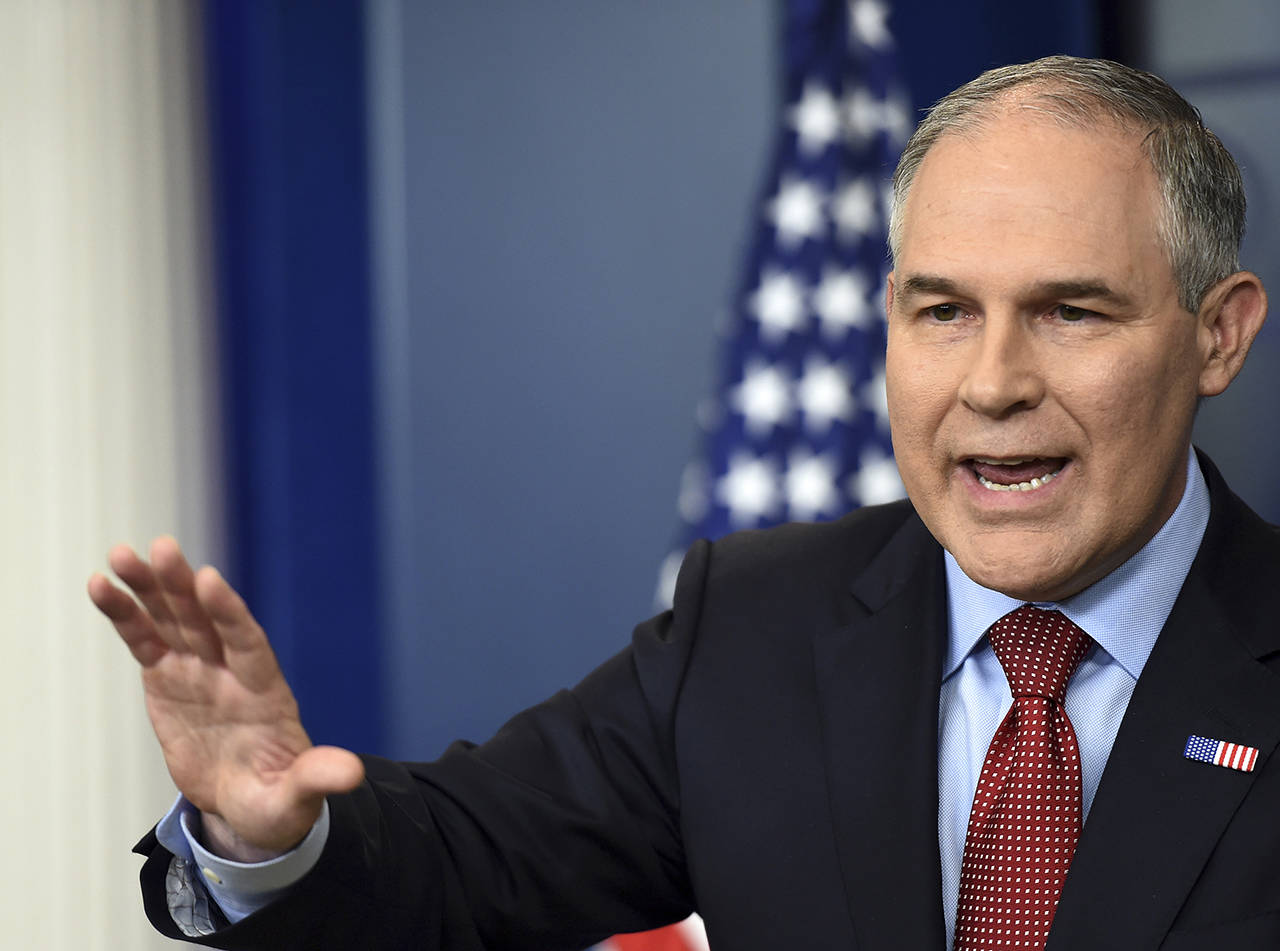WASHINGTON — The Trump administration’s reluctance to confront climate change threatens to create a massive burden on taxpayers, as a lack of planning by federal agencies leaves the government ill-equipped to deal with the fallout from rising temperatures, according to independent congressional investigators.
The report released Tuesday from the Government Accountability Office presents a bleak picture in which the economic costs of climate change spiral ever further upward in the coming decades. While the report finds that coordination among federal agencies in confronting climate change has long been inadequate, it now comes at a time when the White House is making an unprecedented retreat on environmental protection.
The report concludes that President Donald Trump’s scrapping of an Obama-era requirement that federal agencies work together to prepare for warming has left them with no concrete plan of action or indication if there will be one.
Sens. Maria Cantwell (D-Wash.) and Susan Collins (R-Maine) had requested the GAO examination of climate change preparedness. Collins is among the renegade Republicans vocal in their disappointment of the administration’s climate policy. She voted against the confirmation of EPA chief Scott Pruitt and reprimanded the administration for bailing on the Paris agreement to combat climate change.
The report requested by the senators warns that the failure of federal agencies to work in unison in mitigating the impacts of global warming carries a big price tag. “The federal government does not have government-wide strategic planning efforts in place to help set clear priorities for managing significant climate risks before they become federal fiscal exposures,” the report said. “(G)iven the potential magnitude of climate change and the lead time needed to adapt, preparing for these impacts now may reduce the need for far more costly steps in the decades to come.”
The extreme weather events of the past decade that scientists believe were exacerbated by climate change added more than $350 billion in costs to taxpayers, according to the report, a huge drain on the budget as funds were diverted to cover more disaster relief, crop and flood insurance, firefighting costs, and infrastructure and public lands repairs. Those demands threaten to increase by $12 billion to $35 billion each year by the middle of the century, it said. By the end of the century they could go up each year by as much as $28 billion in today’s dollars, a crushing cost for taxpayers.
The Trump administration was invited to present its own view in the report, but opted not to do so. The administration has generally addressed questions about global warming by casting doubt on established climate science. As devastating hurricanes were bearing down on Texas and Florida over the summer, Pruitt dismissed discussion of the role climate change is playing in such storms as opportunistic and inappropriate.
The GAO investigators seem to take a very different view. The report cites federal research concluding extreme events such as floods, droughts and wildfires will become more frequent and intense because of climate change. The less the federal government does to prepare for it, the harder the hit taxpayers will take, it warns.
Investigators urged robust engagement by the Trump White House in confronting the problem, calling on its budget office, its Council of Environmental Quality and its Office of Science and Technology Policy to “use information on the potential economic effects of climate change to help identify significant climate risks facing the federal government and craft appropriate federal responses.”
“Such responses could include establishing a strategy to identify, prioritize and guide federal investments against future disasters,” the report said.
The impacts of warming cut across many sectors of the economy, the report warns. It points as an example to the conclusion of scientists and economists that warming-induced ocean acidification could cut the shellfish harvest in the Pacific Northwest by as much as half in the next 80 years. The forest land in the Rocky Mountains that burns annually could grow by 1.9 million acres over that same time period, according to an exhaustive national climate study conducted by the Rhodium Group, a multinational research firm, that is cited frequently in the congressional report.
The investigators break down how federal agencies will be strained to confront the impacts in different regions of the nation absent better planning, as crop yields drop, coastal infrastructure is damaged and more intense wildfires break out. It urged lawmakers, the White House and agency officials to immediately start identifying “areas of high fiscal exposure.”



